It looks like you're using an Ad Blocker.
Please white-list or disable AboveTopSecret.com in your ad-blocking tool.
Thank you.
Some features of ATS will be disabled while you continue to use an ad-blocker.
share:
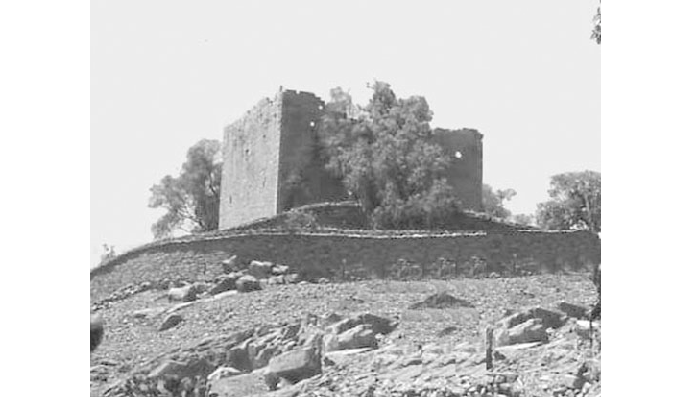
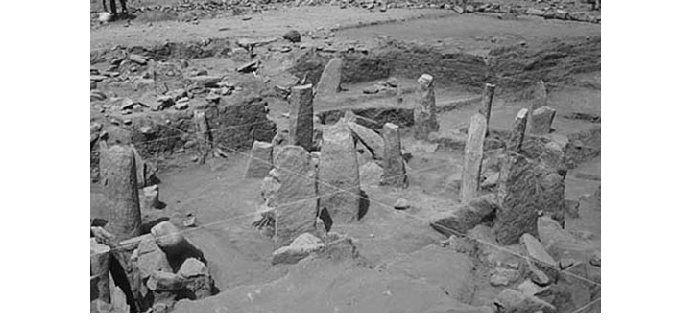
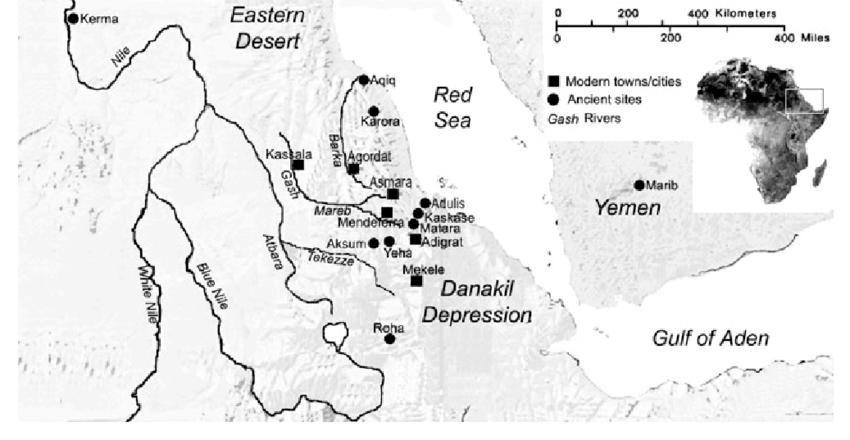
Until the 1980s, most Ethiopianists assumed that a state emerged on the highlands in Eritrea and Tigray as a consequence of a South Arabian (mainly Sabean) colonization of the northern Horn of Africa in the early 1st millennium BC. According to this recon-struction, the South Arabian colonists dominated the local populations, and after the decline of the Kingdom of Saba in Yemen in the 4th–3rd century BC they gave rise to a local kingdom with the capital at Aksum in Tigray. The Aksumite kingdom progressively incorporated the whole region into its territory and laid the foundation of the Christian
kingdom of Ethiopia, which survived until the 1970s. This hypothesis was mainly based on the indisputable evidence of a South Arabian influence in Eritrea and Tigray in the mid-1st millennium BC (Conti Rossini 1928; Ullendorff 1973; Ricci 1984).
Beginning in the 1960s, this narrative has been challenged by archaeological research,
which suggests that the development of complex societies and states in Tigray and Eritrea was not a linear process of state formation, consolidation and decline, but consisted of at least two distinct trajectories to social complexity, indirectly related to each other, in the Eritrean–Sudanese lowlands and the Eritrean and Tigrean highlands respectively. This process was characterized by a shift in the location of complex societies from the lowlands to the highlands in the early 1st millennium BC (Fattovich 1997b). In this paper, which is largely based on the research my colleagues and I have conductedi n eastern Sudan (Fattovich et al. 1984; Fattovich 1991a,b; Sadr 1991) and northern Ethiopia (Fattovich et al. 2000; Bard et al. 2003; Fattovich 2008,2009; Sernicola 2008), after a short description of the environmental and culture-historical context, the basic evidence of early complex societies and ancient states will be reviewed and a recon-struction of their development will be suggested. An interpretation of this process will be outlined in the conclusions.
A major complication in this investigation is the different terminology archaeologists
working in the northern Horn of Africa adopted to identify and describe the cultural units which appeared in the region through time. The cultural sequence in the Eritrean–Sudanese lowlands was outlined by identifying a major ceramic tradition, divided into temporal phases on the basis of ceramic studies and a series of radiocarbon dates. Within this tradition, different groups of assemblages were distinguished on the basis of specific differences in the ceramic components (Fattovich et al. 1984, p. 176, Fig. 2). The cultural sequence in Eritrea and Tigray, in contrast, was outlined by distinguishing two main periods of development of the ancient states in the 1st millennium BC and 1st millennium AD: the Pre-Aksumite Period, when a polity characterized by South Arabian elements appeared in the highlands, and the Aksumite Period, corresponding to the development of the Kingdom of Aksum (Anfray 1968). Three archaeological cultures were later described on the basis of the similarities in the artifacts from single sites: the Pre-Aksumite Culture
www.researchgate.net... Archaeological_Outline#pf14
.
Ok this culture is known as the Gash group, these were the folks who domesticated the donkey among the earlest pack animal, who transported it through Nubia and Egypt and reaching Sumer according to Christopher Eret of UCLA in a vid lecture I viewed some months back.
On the Origins and Dissemination of Domesticated Sorghum and Pearl Millet across Africa and into India: a View from the Butana Group of the Far Eastern Sahel
They're also responsible for the introduction of Sorgum and finger Miller to India from there it spread to China at an early date.
Four decades have passed since Harlan and Stemler (1976) proposed the eastern Sahelian zone as the most likely center of Sorghum bicolor domestication. Recently, new data on seed impressions on Butana Group pottery, from the fourth millennium BC in the southern Atbai region of the far eastern Sahelian Belt in Africa, show evidence for cultivation activities of sorghum displaying some domestication traits. Pennisetum glaucum may have been undergoing domestication shortly thereafter in the western Sahel, as finds of fully domesticated pearl millet are present in southeastern Mali by the second half of the third millennium BC, and present in eastern Sudan by the early second millennium BC. The dispersal of the latter to India took less than 1000 years according to present data. Here, we review the middle Holocene Sudanese archaeological data for the first time, to situate the origins and spread of these two native summer rainfall cereals in what is proposed to be their eastern Sahelian Sudan gateway to the Red Sea and the Indian Ocean trade.
They conducted trade with the states of Egypt and Kerma and other cultures of Lower and Upper Nubia, as well as with groups further east in the Eritrean-Ethiopian highlands and across the Red Sea into the southern Arabia Peninsula (Fattovich 2010, 2012; Bard and Fattovich 2013).
Here, it is proposed that the Gash Group was the culture, which may have been most responsible for the transference of native African summer rainfall cereals to India by the end of the third millennium BC, as it had contact with other cultures in Arabia, especially coastal and fishing people, who, in turn, would have had contact with the Indian continent further to the east (Boivin and Fuller 2009)
link.springer.com...
But what does this tell us ?? that international trade and exchange are very old and the Indian ocean route is much older than we thought, even before the rise of the great Iron age empires, btw another the in would be Punt or Pwanet the trading kingdom the Pharoahs thought of as God's land , which lays not unsurprisingly in Eritrea.
]
edit on 8-9-2020 by Spider879 because: Add content
a reply to: Spider879
I have done my research too on this. Yes, this is all the way it happened.
We all came out of Africa. The oldest humanoid fossils are found around the lakes. We changed from apes in to people around Lake Victoria. On the equator there is where it all began in Kenya, Rwanda, Uganda, Tanzania because long enough was required undisturbed by climate change/ice coming down and up from both poles. Volcanic activity brough many mini ice ages and it took a long time for us to evolve into humanoid and ultimately to our sapien status. Who is to know if we are not still evolving. I believe we are. I believe nothing stands still. When it does it is on its way out as a species.
I believe we began walking up the River Nile from the source of the lakes and spread out from there. Civilization began along that route in Cush /Ethiopia and then in Turkey/ Iraq/Egypt and fed back to Nubia/Ethiopia again as provided for by the trade routes. That Levant land corridor between the Red Sea and the Mediterranean Sea, every human coming into the rest of the world from our origins had to walk through there.
Rivers and humans!
I have done my research too on this. Yes, this is all the way it happened.
We all came out of Africa. The oldest humanoid fossils are found around the lakes. We changed from apes in to people around Lake Victoria. On the equator there is where it all began in Kenya, Rwanda, Uganda, Tanzania because long enough was required undisturbed by climate change/ice coming down and up from both poles. Volcanic activity brough many mini ice ages and it took a long time for us to evolve into humanoid and ultimately to our sapien status. Who is to know if we are not still evolving. I believe we are. I believe nothing stands still. When it does it is on its way out as a species.
I believe we began walking up the River Nile from the source of the lakes and spread out from there. Civilization began along that route in Cush /Ethiopia and then in Turkey/ Iraq/Egypt and fed back to Nubia/Ethiopia again as provided for by the trade routes. That Levant land corridor between the Red Sea and the Mediterranean Sea, every human coming into the rest of the world from our origins had to walk through there.
Rivers and humans!
edit on 8-9-2020 by Kakamega because: (no reason given)
a reply to: Spider879
I will for sure. Thank you.
I am still learning about it and forming theories. There are amazing resources now and we will be able to trace our whole development as humans for sure. All the evidence is waiting for us and each new find is a new piece of the puzzle. The internet is rewally speeding it up too because of the ease of information sharing.
Bless!
I will for sure. Thank you.
I am still learning about it and forming theories. There are amazing resources now and we will be able to trace our whole development as humans for sure. All the evidence is waiting for us and each new find is a new piece of the puzzle. The internet is rewally speeding it up too because of the ease of information sharing.
Bless!
originally posted by: Kakamega
a reply to: Spider879
I have done my research too on this. Yes, this is all the way it happened.
We all came out of Africa. The oldest humanoid fossils are found around the lakes. We changed from apes in to people around Lake Victoria. On the equator there is where it all began in Kenya, Rwanda, Uganda, Tanzania because long enough was required undisturbed by climate change/ice coming down and up from both poles. Volcanic activity brough many mini ice ages and it took a long time for us to evolve into humanoid and ultimately to our sapien status. Who is to know if we are not still evolving. I believe we are. I believe nothing stands still. When it does it is on its way out as a species.
I believe we began walking up the River Nile from the source of the lakes and spread out from there. Civilization began along that route in Cush /Ethiopia and then in Turkey/ Iraq/Egypt and fed back to Nubia/Ethiopia again as provided for by the trade routes. That Levant land corridor between the Red Sea and the Mediterranean Sea, every human coming into the rest of the world from our origins had to walk through there.
Rivers and humans!
How do you explain different skin colors of human kind today?
a reply to: musicismagic
skin colour is an adaptation to living in different environments with different levels of UV radiation ,it has been studied for a long time
new gene variants reveal the evolution of human skin colour
skin colour is an adaptation to living in different environments with different levels of UV radiation ,it has been studied for a long time
new gene variants reveal the evolution of human skin colour
edit on 8-9-2020 by sapien82 because: (no reason given)
a reply to: Spider879
Ive been watching the channel rise and fall of civilisations and one of them is about the civilisation of the Songhai and the African age of gold , was really interesting and of course the Sumerians , but they talk a lot about Ethiopia , really interesting place so much history im sure they mentioned the Gash people in the videos
so I started watching more documentaries and recently watched one about modern ethiopia and its water source to other places , was really cool
going to read more about this now
thanks
Ive been watching the channel rise and fall of civilisations and one of them is about the civilisation of the Songhai and the African age of gold , was really interesting and of course the Sumerians , but they talk a lot about Ethiopia , really interesting place so much history im sure they mentioned the Gash people in the videos
so I started watching more documentaries and recently watched one about modern ethiopia and its water source to other places , was really cool
going to read more about this now
thanks
a reply to: DeathSlayer
what are you not impressed by , the people who domesticated the donkey and seed agriculture and encouraged global trade
thats pretty impressive for humans at that time
as for the names
How about the Sumerians and their king list
what are you not impressed by , the people who domesticated the donkey and seed agriculture and encouraged global trade
thats pretty impressive for humans at that time
as for the names
How about the Sumerians and their king list
edit on 8-9-2020 by sapien82 because: (no reason given)
edit on 8-9-2020 by
sapien82 because: (no reason given)
a reply to: Spider879
hi spider! love spiders! spiders are my favorite animals! did you know that there are 10 meter tall spiders? great thing, right? unfortunately the thing about africa is totally wrong! my grandparents came from germany, best country in the world, besides america! i love it. unfortunately they lost the war, these losers. africa is a s...hole, right? all poor, all sick, terrible! and why? because they don't want to work, because they are no fighters! who knows what happened on earth a thousand years ago? maybe our ancestors are aliens? look at the pyramids or the grand canyon. how could they build this without machines? strange, right? if it would be true what 'some' scientists say, why am i not black? did you ever ask yourself that? life originated in america, 10,000 years ago, i know that, for sure, i'm president, i know everything, right? the bible tells you everything you need to know. i love the bible! have read it a thousand times! there's nothing about africa or anything like that in it. but the main thing is that you vote for me in november. but please don't do it by mail, and if you do it by mail do it in person too and by letter, then nobody can cheat. your president trump
hi spider! love spiders! spiders are my favorite animals! did you know that there are 10 meter tall spiders? great thing, right? unfortunately the thing about africa is totally wrong! my grandparents came from germany, best country in the world, besides america! i love it. unfortunately they lost the war, these losers. africa is a s...hole, right? all poor, all sick, terrible! and why? because they don't want to work, because they are no fighters! who knows what happened on earth a thousand years ago? maybe our ancestors are aliens? look at the pyramids or the grand canyon. how could they build this without machines? strange, right? if it would be true what 'some' scientists say, why am i not black? did you ever ask yourself that? life originated in america, 10,000 years ago, i know that, for sure, i'm president, i know everything, right? the bible tells you everything you need to know. i love the bible! have read it a thousand times! there's nothing about africa or anything like that in it. but the main thing is that you vote for me in november. but please don't do it by mail, and if you do it by mail do it in person too and by letter, then nobody can cheat. your president trump
originally posted by: DeathSlayer
Not impressed....
Jews can prove over 5700 years...by name
a reply to: Spider879
Well I wasn't going for a who is first kinda thread , just some important links to early proto globalism, which began in the late "Neolilthic " which showed the movements of goods and people.
Buuuut !! If wanna go there, well these guys or their near relatives can rattle off kings list , even before a Hebrew was born much less a state..matter of fact if you take the proto Hebrew Abraham of Ur a city state in Sumer at face value, he and his people came on the scene at about 1500 B.C these NE African states were a thing 1500 yrs+ before that.
www.abovetopsecret.com...
Go here^^
a reply to: oloufo
Ok will address this part of your reply, which surprisingly fit the thread.
But actually you'd be quite wrong about that, true Africa the continent did not pop up in the Bible as did any continent. so why would this fit in the conversation, because the Bible did mentioned African nations from that very region spoken above.
Now if you do read the Bible then you should know your begats or table of Nations
The highlighted text are nations within Africa the rest are Africa adjacent,
African individuals mentioned in the Bible are
Simon Niger, aka the "Black" alluding to the river of that name,
Among the first gentile to accept Christiany was the trade minister of Kush or Ethiopia.
Rameses pharoah of Egypt.
Taharka pharoah of Kush and Egypt.
Shabaka also mentioned.
Pheneas, which is p3nahs or the "Nubian" a priest of the Ark
Tharabis Princess of Kush, Wife?? or side chick of Moses.
As a general geographical region which formed part of the garden of Eden
Incidentally pretty much were science called the birth place of modern humans.
Btw Ethiopia the region and Nation aka kush is mentioned 20 times in the BIble, Egypt over 40 Times.
Now this is all bible lore ^^ buyer bewere, But it is what ancient Ppl thought.
the bible tells you everything you need to know. i love the bible! have read it a thousand times! there's nothing about africa or anything like that in it
Ok will address this part of your reply, which surprisingly fit the thread.
But actually you'd be quite wrong about that, true Africa the continent did not pop up in the Bible as did any continent. so why would this fit in the conversation, because the Bible did mentioned African nations from that very region spoken above.
Now if you do read the Bible then you should know your begats or table of Nations
The sons of Ham:
Cush,
Egypt,
Put and Canaan.
The sons of Cush
Seba, Havilah, Sabtah, Raamah and Sabteka.
The sons of Raamah:
Sheba and Dedan.
8 Cush was the father[c] of Nimrod, who became a mighty warrior on the earth. 9 He was a mighty hunter before the Lord; that is why it is said, “Like Nimrod, a mighty hunter before the Lord.” 10 The first centers of his kingdom were Babylon, Uruk, Akkad and Kalneh, in[d] Shinar.[e] 11 From that land he went to Assyria, where he built Nineveh, Rehoboth Ir,[f] Calah 12 and Resen, which is between Nineveh and Calah—which is the great city.
www.biblegateway.com...
The highlighted text are nations within Africa the rest are Africa adjacent,
African individuals mentioned in the Bible are
Simon Niger, aka the "Black" alluding to the river of that name,
Among the first gentile to accept Christiany was the trade minister of Kush or Ethiopia.
Rameses pharoah of Egypt.
Taharka pharoah of Kush and Egypt.
Shabaka also mentioned.
Pheneas, which is p3nahs or the "Nubian" a priest of the Ark
Tharabis Princess of Kush, Wife?? or side chick of Moses.
As a general geographical region which formed part of the garden of Eden
Incidentally pretty much were science called the birth place of modern humans.
10And a river went out of Eden to water the garden; and from thence it was parted, and became into four heads. The name of the first is Pison: that is it which compasseth the whole land of Havilah, where there is gold; 12And the gold of that land is good: there is bdellium and the onyx stone. And the name of the second river is Gihon: the same is it that compasseth the whole land of Ethiopia. And the name of the third river is Hiddekel: that is it which goeth toward the east of Assyria. And the fourth river is Euphrates. And the LORD God took the man, and put him into the garden of Eden to dress it and to keep it. And the LORD God commanded the man, saying, Of every tree of the garden thou mayest freely eat:
www.kingjamesbibleonline.org...
Btw Ethiopia the region and Nation aka kush is mentioned 20 times in the BIble, Egypt over 40 Times.
Now this is all bible lore ^^ buyer bewere, But it is what ancient Ppl thought.
edit on 8-9-2020 by Spider879 because: Fix stuff.
Excellent post. We all came out of Africa. Africa is more genetically diverse then the rest of the world combined. The genes for light and dark skin
are contained in Africa. Race is a social construct.
originally posted by: AugustusMasonicus
a reply to: Spider879
I think you missed the that the poster was doing a Trump impersonation.
Oh that's what he was doing, I was like , sooo confused..
a reply to: Spider879
Ethiopia is a really interesting case study I remember reading somewhere that the average Ethiopian is 1/8 Caucasian. This can be put down to a mass migration of people into Ethiopia of Caucasians sometime in antiquity possibly Greek, Roman or Hebrew (which is a possibility when one considers the Falasha people), or even some group many years earlier than these. All extremely interesting stuff
Ethiopia is a really interesting case study I remember reading somewhere that the average Ethiopian is 1/8 Caucasian. This can be put down to a mass migration of people into Ethiopia of Caucasians sometime in antiquity possibly Greek, Roman or Hebrew (which is a possibility when one considers the Falasha people), or even some group many years earlier than these. All extremely interesting stuff
originally posted by: ufoorbhunter
a reply to: Spider879
Ethiopia is a really interesting case study I remember reading somewhere that the average Ethiopian is 1/8 Caucasian. This can be put down to a mass migration of people into Ethiopia of Caucasians sometime in antiquity possibly Greek, Roman or Hebrew (which is a possibility when one considers the Falasha people), or even some group many years earlier than these. All extremely interesting stuff
Thanks.
I generally dislike "oid " terms in bio-anthropology like , Negroid, Caucasoid , Mongoloid etc, because it generally confuses folks, example Black folks living out in the Pacific used to be judged as " Negroid" , truth is they are the most distantly related to folks living on the Niger river in Africa, same with Caucasoid , as some folks living in distant lands have no relationship to folks living in the Black sea , I prefer the term Eurasia , that said there was and still is considerable gene flow back and forth for thousands of yrs , between African and African Ajecent regions.
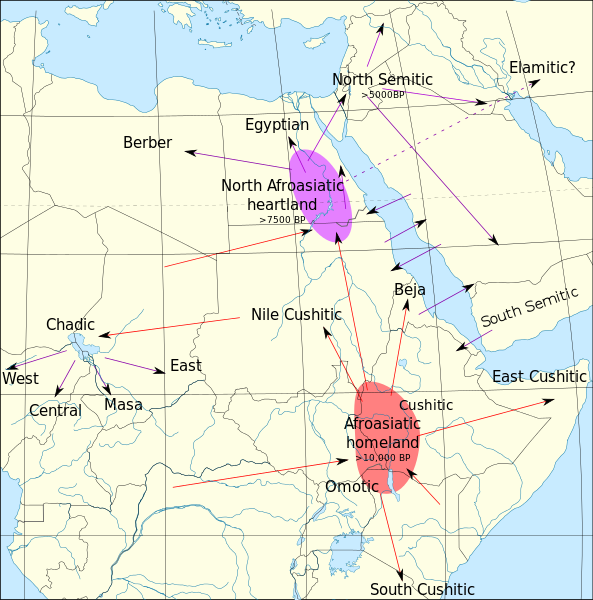
Check out this language map, Africans moved into the Middle East mixed it up with folks living there, double back to Africa at various point and move out again, the gene map showed a similar movement along those lines exectly.
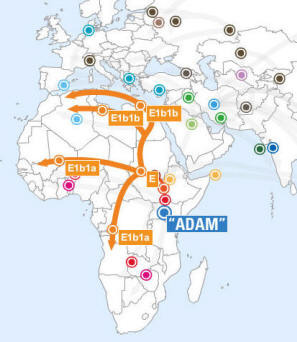
Genetic map of E
Oh btw checkout the dates for the language dispersal , late Neolithic, when trade and travel began to take shape ...
edit on 8-9-2020 by Spider879 because: Add content
a reply to: Spider879
Oh yeah totally know where you are coming from........."I generally dislike "oid " terms in bio-anthropology like , Negroid, Caucasoid , Mongoloid etc, because it generally confuses folks" Lol, it's so 19th Century
I really like your posts Spider, I'm personally a big fan of Ghanaian stuff back to when I was a student (we are talking getting on for half way back to WW2 / getting old now lol) and the olden days for that country is truly amazing.
Even when we in Anglo Saxon England in 1066 were facing an absolute constant attack and invasion of Normans and other various Scandinavian gangsters, at pretty much the same time Ghana itself was under attack from similar gangsters these being from the Islamic world.
People and ideas were on the move
Oh yeah totally know where you are coming from........."I generally dislike "oid " terms in bio-anthropology like , Negroid, Caucasoid , Mongoloid etc, because it generally confuses folks" Lol, it's so 19th Century
I really like your posts Spider, I'm personally a big fan of Ghanaian stuff back to when I was a student (we are talking getting on for half way back to WW2 / getting old now lol) and the olden days for that country is truly amazing.
Even when we in Anglo Saxon England in 1066 were facing an absolute constant attack and invasion of Normans and other various Scandinavian gangsters, at pretty much the same time Ghana itself was under attack from similar gangsters these being from the Islamic world.
People and ideas were on the move
a reply to: ufoorbhunter
Oh 1066 was a pivotal yr in History, it must've seemed like the world was ending for the Saxons, but out of that violence and intermingling, a superpower was being forged centuries later just that they and the rest of the world wouldn't have guessed.
Btw I was thinking of doing a thread on the Umayyads getting smoked by the Wagadu aka Ghana, and Christian Nubia, centuries earlier, the French also thwarted their advance, for they almost never lose, but what happened in Wagadu was special, for after their defeat, they renounced Islam, and adopted Wagadu's "pagan" faith, that almost never happened , when dealing with religious zealots especially Islamic expansionist of that era, turning Christian or Jewish, it can happened , but rarely , turning pagan??..that's some serious saying uncle.
Oh 1066 was a pivotal yr in History, it must've seemed like the world was ending for the Saxons, but out of that violence and intermingling, a superpower was being forged centuries later just that they and the rest of the world wouldn't have guessed.
Btw I was thinking of doing a thread on the Umayyads getting smoked by the Wagadu aka Ghana, and Christian Nubia, centuries earlier, the French also thwarted their advance, for they almost never lose, but what happened in Wagadu was special, for after their defeat, they renounced Islam, and adopted Wagadu's "pagan" faith, that almost never happened , when dealing with religious zealots especially Islamic expansionist of that era, turning Christian or Jewish, it can happened , but rarely , turning pagan??..that's some serious saying uncle.
originally posted by: Spider879Btw I was thinking of doing a thread on the Umayyads getting smoked by the Wagadu aka Ghana, and Christian Nubia, centuries earlier, the French also thwarted their advance, for they almost never lose, but what happened in Wagadu was special, for after their defeat, they renounced Islam, and adopted Wagadu's "pagan" faith
That sounds totally awesome. It's a great period and something the history books hardly ever mentioned and is probably as important for the Christian world as the defence of Vienna where the Turkish take over of Europe was reversed
new topics
-
To become president, Zelensky had to learn Ukrainian
Political Conspiracies: 19 minutes ago -
Green Grapes
General Chit Chat: 4 hours ago -
Those Great Fresh Pet Commercials
Television: 9 hours ago -
S.C. Jack Smith's Final Report Says Trump Leads a Major Conspiratorial Criminal Organization!.
Political Conspiracies: 11 hours ago
top topics
-
Joe meant what he said about Hunter's pardon....
US Political Madness: 13 hours ago, 11 flags -
S.C. Jack Smith's Final Report Says Trump Leads a Major Conspiratorial Criminal Organization!.
Political Conspiracies: 11 hours ago, 11 flags -
Advice for any young Adult .
General Chit Chat: 12 hours ago, 10 flags -
Green Grapes
General Chit Chat: 4 hours ago, 5 flags -
It’s Falling…
Philosophy and Metaphysics: 15 hours ago, 4 flags -
Regent Street in #London has been evacuated due to a “bomb threat.”
Other Current Events: 14 hours ago, 3 flags -
Those Great Fresh Pet Commercials
Television: 9 hours ago, 3 flags -
To become president, Zelensky had to learn Ukrainian
Political Conspiracies: 19 minutes ago, 1 flags
active topics
-
S.C. Jack Smith's Final Report Says Trump Leads a Major Conspiratorial Criminal Organization!.
Political Conspiracies • 40 • : GotterDameron23 -
House Passes Laken Riley Act
Mainstream News • 22 • : KrustyKrab -
To become president, Zelensky had to learn Ukrainian
Political Conspiracies • 0 • : Imhere -
Los Angeles brush fires latest: 2 blazes threaten structures, prompt evacuations
Mainstream News • 107 • : Vermilion -
Russia Ukraine Update Thread - part 3
World War Three • 6904 • : Imhere -
Steering the Titantic from the Drydock.
Rant • 43 • : charlest2 -
What Comes After January 20th
Mainstream News • 33 • : underpass61 -
President Carter has passed
Mainstream News • 44 • : WeMustCare -
Those stupid GRAVITE commercials
Rant • 13 • : GENERAL EYES -
-@TH3WH17ERABB17- -Q- ---TIME TO SHOW THE WORLD--- -Part- --44--
Dissecting Disinformation • 3973 • : duncanagain
